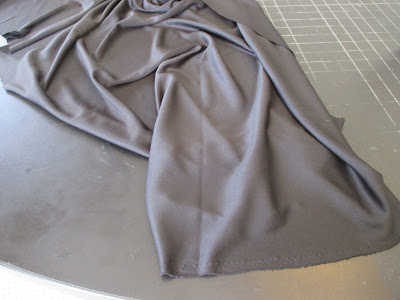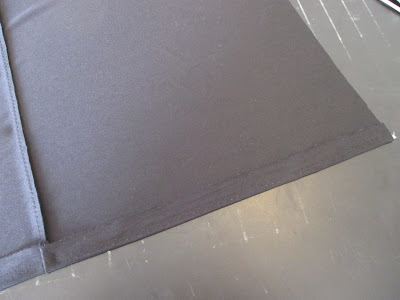The fabric I used for the experiment was this. Slinky and drapey, and with a substantial stretch in both directions (about 50%.)
The machine I used was my 401
And the stretch stitching "equipment" is this:
Now, I don't have this cute little plastic case for mine, I bought the foot and cam separately. If you're looking for the same thing, it is the #22 cam (which looks like an inverted #8) and an overedge foot. That's all it is. (This same combo is great for finishing seams with an overedge stitch.)
I used a Schmetz stretch needle and Guttermann 100% polyester thread. And here are the results. This stitched perfectly, no skipped stitches, no puckering, and I can stretch the seam without breaking any stitches. Remember, the 401 doesn't have a built-in "back and forth" stretch stitch, so this is how it was done on a forward stitching machine.
This is how the stitch looks
Here is the front side
Now for hemming that stretchy knit with a twin needle. My new best friend is Wonder Tape. You don't want to try to press up or pin up this hem, but of course you want it to stay in place without shifting. So you use this helpful product.
Tape it down with the bottom edge where you want your hem to be.
Then you peel the paper backing off
and turn up your hem and press it into place
I did NOT use a stretch twin needle, just a universal. Results might be even better with a stretch needle, though. Anyway, between the Wonder Tape and the paper backing, there was no shifting or puckering of the fabric.
PS... The 401 takes two separate needles, so if you don't have a stretch twin needle you can use two stretch needles in there instead. I didn't think of that until after I did this.
*Keep in mind that this is a FORWARD ONLY "stretch stitch." By that I mean that it isn't the kind of true stretch stitch made by later machines in which the stitch is made by a forward/reverse stitching motion. Those kind of machines build the stretch right into the stitch and are the gold standard for stretch stitching. Keep in mind that this is the only the best method for a forward stitch pattern.







































